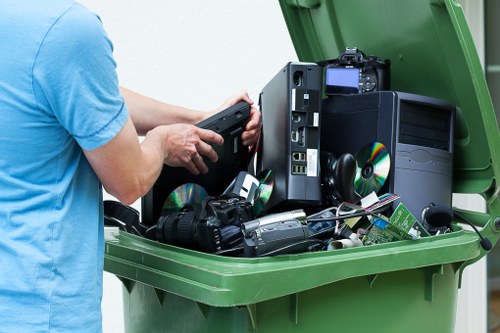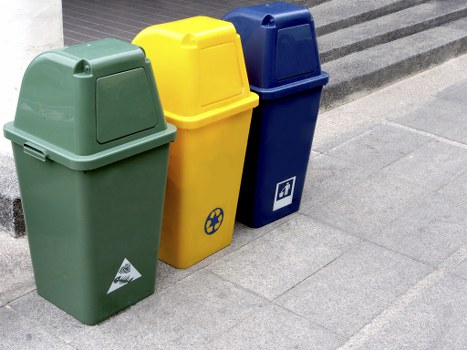Furniture Clearance in Office Clearance

Office spaces often undergo transformations, whether it's due to restructuring, relocation, or modernization efforts. One critical aspect of these changes is **furniture clearance**, which involves the systematic removal and disposal of office furniture. Efficient furniture clearance not only ensures a clutter-free environment but also contributes to the overall productivity and aesthetics of the workplace.
Understanding the nuances of furniture clearance is essential for businesses aiming to maintain a professional and organized office space. This process encompasses various tasks, from inventory assessment to the final disposal of unwanted items. By implementing effective clearance strategies, companies can optimize their workspace, reduce costs, and adhere to sustainability practices.
In this comprehensive guide, we will delve into the key aspects of furniture clearance in office environments. We'll explore best practices, common challenges, and actionable tips to ensure a smooth and efficient clearance process.

Why Is Furniture Clearance Important in Office Settings?
Furniture clearance plays a pivotal role in maintaining the functionality and aesthetics of an office. **Here are some reasons why it is important:**
- Space Optimization: Removing unnecessary furniture creates a more open and flexible workspace.
- Cost Efficiency: Clearing out old furniture can reduce maintenance costs and make way for more cost-effective solutions.
- Environmental Responsibility: Proper disposal and recycling of furniture contribute to sustainable business practices.
- Enhanced Productivity: A decluttered environment can boost employee morale and productivity.
Addressing these factors through effective furniture clearance can significantly impact the overall success and efficiency of an organization.
Moreover, regular clearance helps in keeping the office up-to-date with the latest trends and ergonomic standards, ensuring that employees have access to comfortable and functional workspaces.

Steps to an Effective Furniture Clearance
1. Assess and Inventory
The first step in furniture clearance is to **assess the current inventory**. This involves cataloging all existing furniture, noting the condition, and determining which items are essential, outdated, or redundant.
- Create a detailed inventory list.
- Evaluate the condition and functionality of each piece.
- Identify items that can be reused, donated, or recycled.

2. Plan the Clearance Process
Developing a clear plan is crucial for a smooth clearance process. This includes setting timelines, assigning responsibilities, and ensuring that all stakeholders are informed.
- Establish a timeline for the clearance.
- Assign tasks to team members.
- Communicate the plan to all relevant parties.
A well-structured plan helps in minimizing disruptions to the daily operations of the office.

3. Implement Disposal Methods
Choosing the right disposal methods is essential for effective furniture clearance. Depending on the condition of the furniture, options include selling, donating, recycling, or professional disposal.
- Sell: Market gently used furniture through online platforms or auctions.
- Donate: Give away usable furniture to charities or non-profit organizations.
- Recycle: Ensure that materials are recycled appropriately to reduce environmental impact.
- Professional Disposal: Hire specialized services for large-scale or hazardous displacements.
Selecting the appropriate disposal method ensures compliance with environmental regulations and enhances the sustainability of the office clearance process.
Additionally, maintaining records of disposed items can aid in future audits and sustainability reporting.
Best Practices for Furniture Clearance

1. Start Early
Initiating the clearance process well in advance of any planned office changes allows ample time for thorough assessment and implementation. Early planning can prevent last-minute rushes and ensure that all tasks are completed efficiently.
- Begin inventory assessment months before the move or renovation.
- Identify potential obstacles and address them proactively.
- Coordinate with other departments to align clearance efforts.
Starting early also gives the opportunity to explore various disposal options without pressure.

2. Communicate Clearly
Effective communication is key to a successful furniture clearance. Keeping all stakeholders informed about the process, timelines, and their roles ensures smooth execution.
- Hold regular meetings to update progress.
- Provide clear instructions and expectations.
- Address any concerns or questions promptly.
Transparent communication fosters collaboration and minimizes misunderstandings during the clearance process.
Moreover, involving employees in the decision-making process can enhance cooperation and reduce resistance to change.
Common Challenges and Solutions

1. Time Constraints
Office clearances often operate under tight schedules, which can lead to rushed processes and overlooked details.
Solution: Develop a detailed project plan with realistic deadlines, and allocate sufficient resources to meet the clearance objectives without compromising quality.- Prioritize tasks based on importance and urgency.
- Delegate responsibilities effectively among team members.
- Use project management tools to track progress.
By managing time efficiently, businesses can ensure that the clearance is completed smoothly and without undue stress.
2. Managing Costs
Budget constraints can pose significant challenges to furniture clearance efforts. It's essential to balance cost-saving measures with the need for effective disposal and replacement.
Solution: Explore various disposal options, such as donating or selling items to offset costs. Additionally, consider bulk disposal services that may offer discounts for larger volumes.- Seek multiple quotes from disposal service providers.
- Reuse or refurbish furniture when possible.
- Implement a budget tracking system to monitor expenses.
Effective cost management ensures that the clearance process remains financially sustainable.

3. Ensuring Compliance
Adhering to environmental and legal regulations is crucial during furniture clearance. Non-compliance can lead to penalties and damage to the company's reputation.
Solution: Stay informed about relevant laws and regulations, and partner with disposal services that prioritize compliance and sustainability.- Research local disposal regulations.
- Partner with certified recycling firms.
- Maintain documentation for all disposed items.
Compliance not only avoids legal repercussions but also supports the company's commitment to environmental responsibility.
Sustainability in Furniture Clearance

1. Recycling and Upcycling
Integrating recycling and upcycling into the furniture clearance process promotes sustainability by reducing waste and repurposing materials.
- Sort materials for appropriate recycling streams.
- Transform old furniture into new, functional pieces.
- Collaborate with organizations specializing in upcycling.
These practices not only minimize environmental impact but also foster innovation in office design.
2. Donating to Charities
Donating usable furniture to charities extends the lifecycle of office items and supports community initiatives.
Solution: Identify reputable charitable organizations that can benefit from surplus office furniture.- Research local charities in need.
- Arrange for transportation and delivery of donated items.
- Obtain tax deductions for charitable contributions.
Donation not only aids those in need but also enhances the company's social responsibility profile.

3. Partnering with Eco-Friendly Disposal Services
Collaborating with disposal services that prioritize eco-friendly practices ensures that furniture clearance aligns with sustainability goals.
- Choose services that utilize green disposal methods.
- Verify certifications and compliance with environmental standards.
- Support businesses committed to reducing ecological footprints.
Eco-friendly partnerships contribute to a positive environmental impact and reinforce the company's commitment to sustainability.
Choosing the Right Furniture Clearance Service

1. Experience and Expertise
Selecting a clearance service with extensive experience in office furniture removal ensures professionalism and efficiency.
- Review the company's track record.
- Assess their expertise in handling various types of furniture.
- Seek recommendations and testimonials.
Experienced services can navigate challenges effectively, providing a seamless clearance process.
2. Comprehensive Services
A full-service clearance provider offers a range of solutions, from inventory assessment to final disposal.
Solution: Opt for services that handle all aspects of clearance, including logistics, recycling, and donation facilitation.- Evaluate the scope of services offered.
- Ensure they can meet specific clearance needs.
- Check for additional offerings, such as cleaning or refurbishing.
Comprehensive services streamline the clearance process, reducing the need for multiple vendors.

3. Cost Transparency
Understanding the cost structure of clearance services helps in making informed decisions and avoiding hidden fees.
- Request detailed quotes outlining all expenses.
- Compare pricing among different providers.
- Seek services that offer flexible payment options.
Transparent pricing ensures that budget constraints are respected and financial planning remains accurate.
4. Sustainability Practices
Prioritizing services that emphasize sustainability aligns clearance efforts with environmental values.
Solution: Inquire about the company's recycling rates and eco-friendly disposal methods.- Assess their commitment to reducing waste.
- Verify their adherence to environmental standards.
- Choose partners that support the company's sustainability goals.
Aligning with eco-conscious services enhances the overall impact of furniture clearance initiatives.
Conclusion

Furniture clearance in office environments is a multifaceted process that demands careful planning, effective execution, and a commitment to sustainability. By understanding its importance and following best practices, businesses can transform their workspaces into organized, efficient, and aesthetically pleasing environments.
Addressing common challenges such as time constraints and cost management ensures that the clearance process remains smooth and within budget. Moreover, embracing sustainable disposal methods reinforces the company's dedication to environmental responsibility.
For businesses looking to optimize their office spaces through professional furniture clearance, partnering with experienced and eco-friendly service providers is key to achieving long-term success and fostering a productive workplace.
Contact us today to learn how our expert furniture clearance services can help transform your office space efficiently and sustainably.
Frequently Asked Questions
- Efficient and Eco-Friendly Office Clearance Solutions in Wapping
- Comprehensive Guide to Office Clearance Services in Hornsey
- Comprehensive Guide to Office Clearance in Elmstead
- Essential Office Clearance Services in Crystal Palace
- Essential Insights into Marks Gate Office Clearance Services
- Effective Office Clearance Solutions in West Heath
- Comprehensive Office Clearance Services in Croydon
- Efficient Office Clearance Solutions in Nunhead
- Essential Insights into Office Clearance Services in Bow
- Efficient Office Clearance Solutions in Mile End
- Essential Office Clearance Services in Grahame Park
- Efficient and Reliable Office Clearance in Upper Clapton
- Comprehensive Guide to Office Clearance Services in Chelsfield
- Comprehensive Guide to Office Clearance in Clerkenwell
- Efficient and Sustainable Office Clearance Solutions in East Barnet
- Comprehensive Guide to Office Clearance Services in Dagenham
- Essential Insights into Office Clearance Services in Fulwell